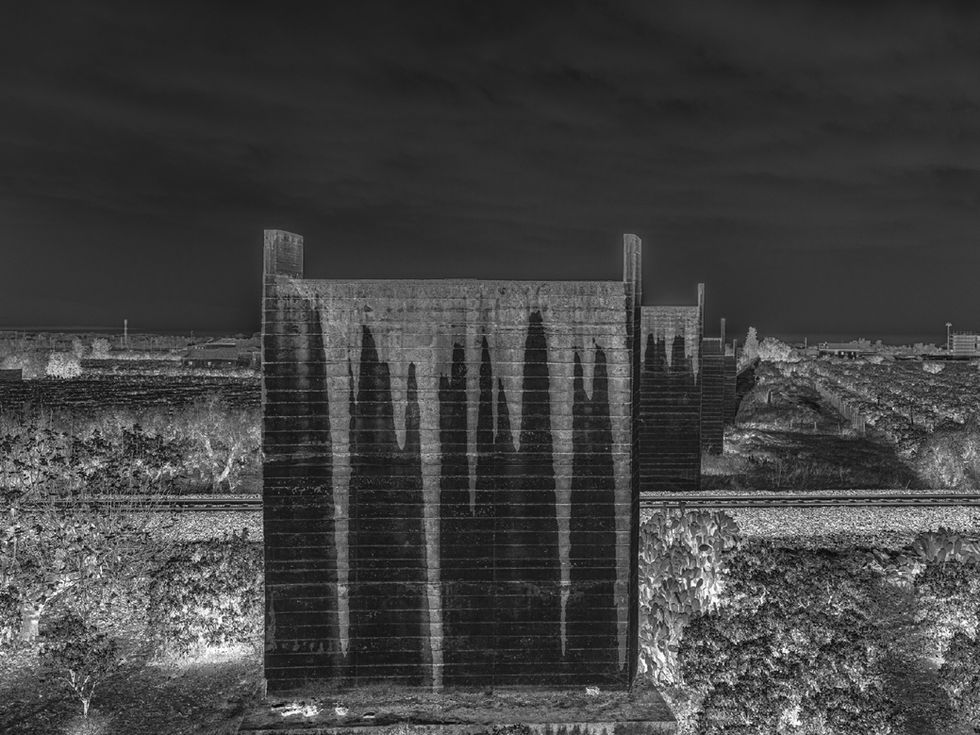
Il Bel Paese
(The beautiful country)
Latent memory as an image carried by light that is fixed on a sensitive support of the cerebral cortex. My father is suffering from illness, he loses fragments of his biography every day. During our rare encounters, he addresses me as an unknown, looks at me curiously, and tries to draw confetti of life from the unmade net of his memories, scrutinizing my face with infinite sweetness.
My father loves art, he had a particular passion for the landscape painters exhibited at the Museum of Rome, a stone's throw from Piazza Navona.
He spoke to me rapt in front of the paintings and engravings of Jacob Philipp Hackert, Friedrich Wilhelm Gmelin, Joseph Anton Koch, Caspar van Wittel and many others.
He talked to me about it so much that he developed in me a natural reluctance to
representation of the classicist landscape of this period.
Once my education was over, I decided to leave and leave behind Italy, its academic and romantic landscapes of the Grand Tour and the powerful imagery that delivered it to the history of art and civilization, such as the "Beautiful country".
From the first hints of his illness, I thought back to those visits, to his passionate speeches in front of the paintings, which he often seasoned with anecdotes about the lives of artists.
The memory of my father, my memory of him, my childhood and my country come together in the paintings that I observed listening to him; those landscapes thus become a latent image, similar to the one that remains imprinted on sensitive photographic material, that unique moment, before being revealed by development, just like a substrate of memory.
My research began to move in this direction when I was invited to an artistic residency by the Planches Contact Festival in Normandy, to produce a work on the territory and here, in the relationship with the Impressionists in these places, I took the opportunity to deepen a technique shooting and printing, organic to a project on the Italy of landscape painters.
The images attached are part of the body of work produced during the artist's residency in Normandy, exhibited in October 2022 in the Les Franciscan Museum in Deauville.
On this occasion, I tried to obtain a high-quality technical specificity that I intend to apply to the Il bel Paese artistic project. In more detail, I began to reflect on how I could, with a completed study, expand the knowledge of the landscape inherent in my country and how to deal with some great masters of landscape photography such as Giacomelli, Ghirri, Guidi, Basilico, Jodice, Chiaromonte Barbieri, to name but a few some, from the recent past, who have contributed to a reinterpretation of the Italian landscape, trying to move away from the cliché of the "beautiful country" to arrive at a more stately, intimate and modern vision.
Il bel Paese, the title of the Italian project, unfolds on this narrative thread, travelling and photographing the 4,365 km of the coast of the Italian peninsula, with forays into the countryside surrounding some cities that are not located on the sea, such as Rome and Florence, Pisa. In close relationship with the work of the (vedutisti) painters who often represented Italian landscapes, with that idealized romantic style, organic to the feeling of the scions of the European nobility, who on the Grand Tour had the opportunity for an academic, artistic and literary training necessary for their status.
The intention of the project is to deliver a different image of Italy, latent and mirroring the common and classical one. Interpreting the contemporary landscape of the peninsula, along the lines of the image created by the landscape painters.
I feel I have found the technique, which in photography is the language, to tell my vision after so many years of this personal bond so deep, which binds me to the memory of people and places, lived or imagined. A need, for which I know the reasons, which has now become urgency with the passing of the months.
That is a final point, between me and my private and public past, delivering a visual idea that founds together the memory of my father, mine and that of my country, in turn intersected with the wider context of the history of classical art.
























